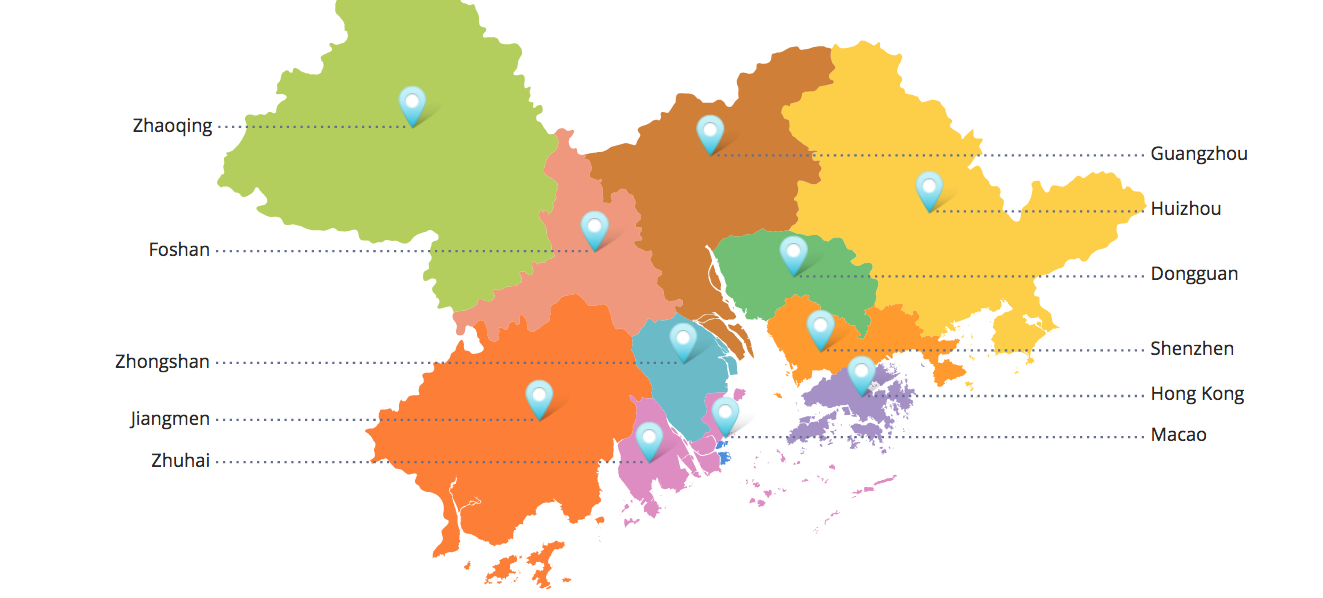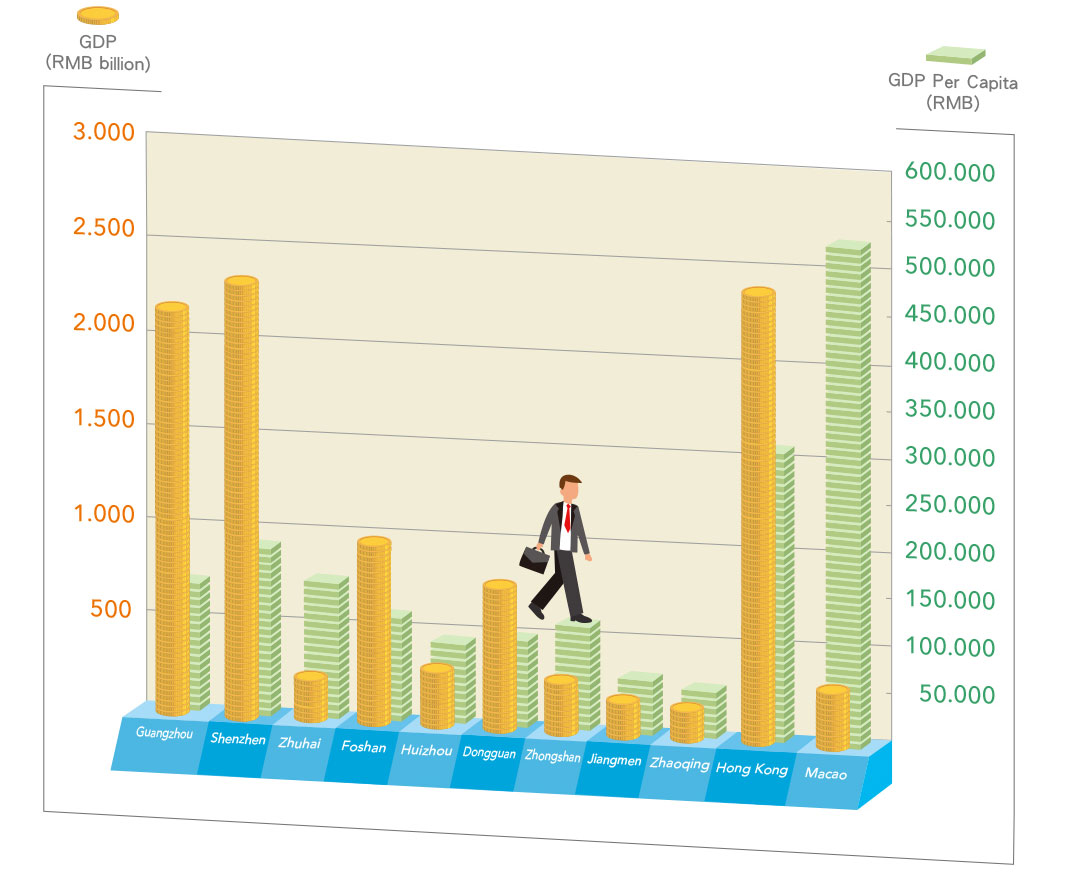The Greater Bay Area plan has finally been put into action after 11 years of planning, according to a timeline of events compiled by the Government of Macau Special Administrative Region.
On Monday, February 18, the Central Government released the Outline Development Plan for the Guangdong-Hong Kong-Macao Greater Bay Area through Xinhua, China’s state-owned news agency. The 11-city cluster, stretching from Huizhou to Zhaoqing and down to Macau and Hong Kong, is preparing to ramp up efforts to become a ‘world-class city cluster’ and provide support for the ‘Belt and Road Initiative.’
The Greater Bay Area consists of nine Chinese mainland cities (Guangzhou, Shenzhen, Huizhou, Dongguan, Zhuhai, Zhongshan, Jiangmen, Foshan and Zhaoqing) and two special administrative regions (Macau and Hong Kong). This extended area covers 56,000 square kilometers with a combined population of over 70 million.

The Greater Bay Area. Image via Greater Bay Area Website
The 11-chapter outline discusses both the short term (from now until 2022) and long term (from 2022 to 2035) development targets for the region. According to the development plan, cooperation between Guangdong, Hong Kong and Macau should be bolstered and the combined strength of the Greater Bay Area should be significantly stronger by 2022. As for 2035, the Greater Bay Area should have greater influence and increased international competitiveness, making the area a global economic force. The region should also be supported by new innovations that closely connect each city within the area.
The plan will look to Hong Kong, Macau, Guangzhou and Shenzhen to be the “core engines” in developing the area into a place that will rival the likes of Silicon Valley in the US and Tokyo Bay area in Japan. Hong Kong is called upon to further develop into a financial and transportation hub, while Macau will double its efforts in tourism and leisure and help bridge the gap between China and Portuguese-speaking nations. Shenzhen will leverage its position as one of the biggest of China’s technology hubs, home to tech giants Tencent and DJI. Lastly, Guangzhou will strengthen its status as an international commerce and industrial powerhouse.

The Gross Domestic Product (GDP) of each city in the Greater Bay Area. Image via Greater By Area Website
Outside of these four metropolises, Guangdong’s smaller cities that are also considered a part of the plan will receive support from the major cities in further developing their distinct strengths and characteristics while increasing competitiveness.
It’s worth noting that the plan does not contain many tangible targets, but rather, calls on cities within the area to increase their efforts in the industries they are already invested. It will be up to the workers and innovators of this region to substantially improve in areas such as environmental protection, education, tourism, innovation and technology, financial services, transportation and logistics, international legal and dispute resolution, youth development, arts, intellectual property and medical services.
The plan also states that the development of the Greater Bay Area will “facilitate the enrichment of the implementation of ‘one country, two systems’ and foster closer cooperation between the Mainland and the two SARs (Special Administrative Regions),” while promoting opportunities for Hong Kong and Macau residents to live and work on the Chinese mainland. This excerpt reinforces China’s reason for linking both Macau and Hong Kong to the Chinese mainland with a new high-speed railway and the world’s longest ocean-crossing bridge.
According to China Daily, the bay area contributes about 12 percent of the nation’s GDP while only amounting to less than 5 percent of the whole population. The plan is viewed as a strategic move to consolidate the strengths of diverse cities located within such close proximity. One of the plan’s goals is to free up the flow of talent and goods, and create an attractive business environment in order to lure more multinationals to establish a headquarters as well as other investment opportunities.
So, with the plan now official, it’s time to ‘add oil,’ Greater Bay Area.
[Cover image via @smnzhu/Unsplash]






















0 User Comments